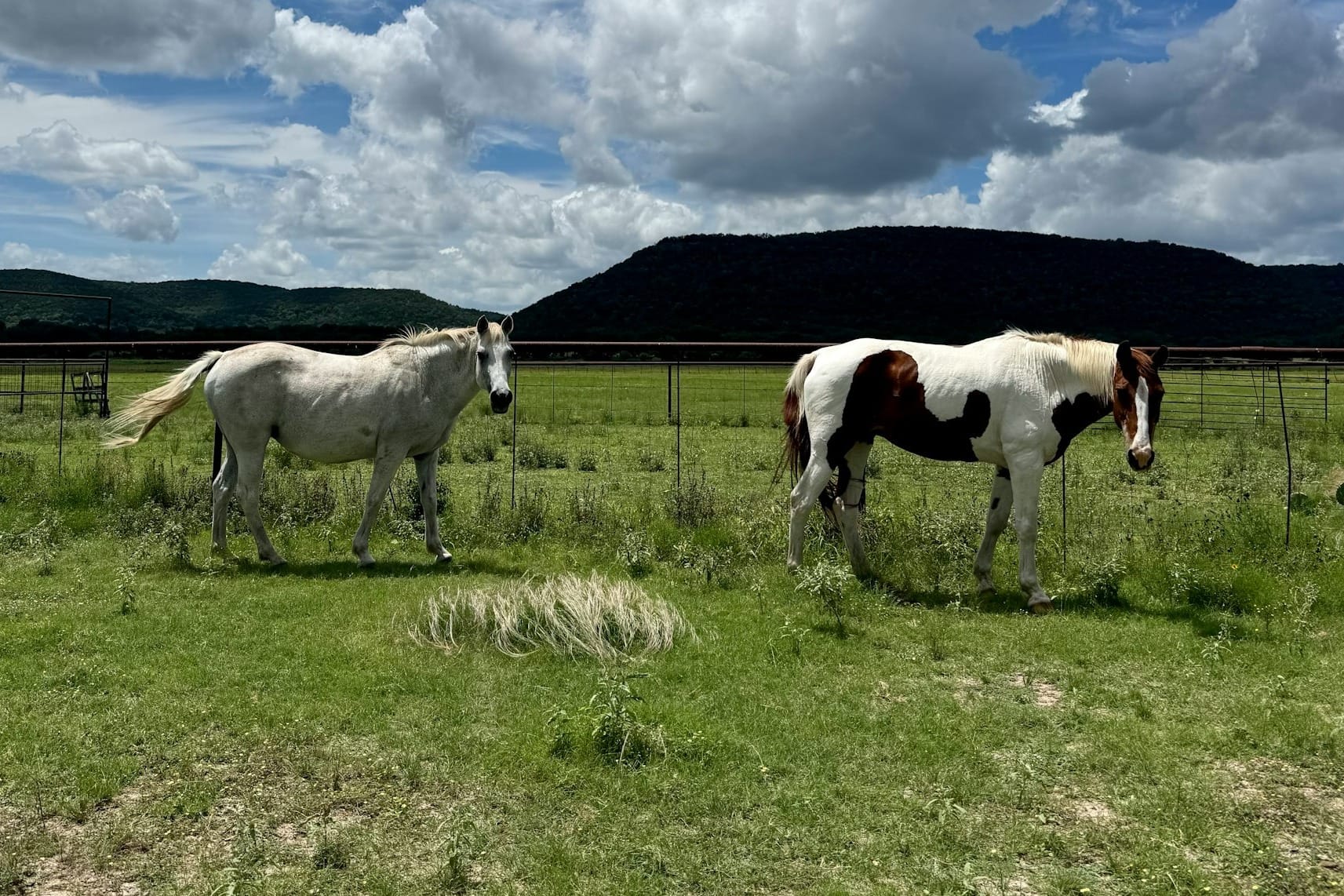Understanding the EHV-1 outbreak in Texas: What Horse Owners Need to Know
Stay informed on the recent EHV-1 outbreak in Texas. Learn how this contagious virus spreads, spot early symptoms, and follow expert-recommended biosecurity tips to protect your horses.

As news of an EHV-1 outbreak circulates in Texas, many horse owners are looking for clear, reliable information on what this virus means for their barns and show schedules. In this blog you’ll find all the info you need about the current situation, as well as an explanation of what EHV-1 is, how it spreads, common symptoms, and biosecurity tips to help keep your horses safe!
Texas Outbreak
Commissioner Sid Miller and the Texas Department of Agriculture (TDA) today issued an alert to Texas horsemen of an outbreak of Equine Herpesvirus Type 1 (EHV-1) reported by Texas veterinarians after the recent World Championship Barrel Racing (WPRA) Finals in the Waco area on November 5-9. Commissioner Miller is urging all horse owners, trainers, and venue operators who attended or were in proximity to the event, or who have recently returned from any large equine gathering in the Waco region in the last 14 days to act swiftly, monitor their animals carefully, and implement heightened biosecurity measures.
“This virus can spread fast, it can be deadly, and the earliest signs are often so subtle they’re easy to miss,” Commissioner Miller, himself an avid horseman, said. “That’s why monitoring your horses right now is critical. The quicker we identify a potential case, the better chance we have to protect not only our animals, but the entire Texas equine community.”
What is EHV-1
Equine Herpesvirus-1 (EHV-1) is a highly contagious virus that spreads quickly and efficiently, making early precaution and identification critical. EHV-1 has four forms, causing respiratory infection, neonatal infection, abortion, or neurological signs. While many horses are exposed to it at some point in their lives, certain strains can cause more serious illness. The virus spreads primarily through respiratory droplets, shared equipment, contaminated surfaces, and close horse-to-horse contact, making barns, shows, and transport scenarios especially vulnerable during an outbreak.
Common Symptoms to Watch For
While some horses may show only mild signs, or none at all, others can develop fever, nasal discharge, cough, lethargy, and reduced appetite. More serious cases can progress to the neurological form, called Equine Herpes Myeloencephalopathy (EHM), which may include incoordination, hind-end weakness, trouble standing, and urine retention. Because early symptoms can look like many other conditions, prompt temperature monitoring and veterinary guidance are essential.
How EHV-1 Spreads
The virus is most often transmitted through direct contact with an infected horse’s respiratory secretions, but it can also travel via buckets, tack, grooming tools, shared handlers, and even clothing or hands. Airborne spread over short distances is also possible. This wide range of transmission routes is why outbreaks can escalate quickly if biosecurity lapses occur.
Quarantine and Containment Protocols
During periods of outbreak, horses in the affected or potentially affected areas should avoid traveling unless necessary. If a horse is suspected to have been exposed or confirmed to be infected, immediate isolation is critical. Affected horses should be placed in a separate, clearly marked area with dedicated equipment, handlers, and protective clothing. No horses should move on or off the property until cleared by a veterinarian. Temperature checks should be performed twice daily on all exposed horses, and quarantine typically continues for a minimum of 21–28 days after the last fever or confirmed case, depending on veterinary guidance.
Understanding Biosecurity
Biosecurity is the backbone of disease prevention in any equine environment. Because EHV-1 spreads so easily (through direct contact, shared equipment, contaminated surfaces, and even on the clothing or hands of people moving between horses) small lapses can quickly escalate into widespread exposure. Strong biosecurity practices don’t just protect your own horses; they help safeguard every horse on the property and support broader containment efforts during an outbreak. Even simple, consistent habits can significantly reduce the odds of viral transmission.
Practical Biosecurity Steps to Keep Horses Safe
1. Establish Clear Barn Traffic Rules
Limit the number of people coming and going, and restrict access to essential personnel only. Anyone entering the barn should wash hands or use sanitizer and avoid contact with other horses beforehand. If you board, ask management what steps they’re taking to reduce foot traffic. If you own a boarding barn, post clear rules and protocol for boarders and visitors to follow. If you have potentially exposed horses or confirmed horses, consider restricting the amount of people coming through your facility to reduce potential spread or exposure.
2. Create Separation Between Horses
Avoid nose-to-nose contact, shared turnout spaces, or close interaction with unfamiliar horses. If possible, maintain physical distance between stalls and avoid tying horses near each other in common areas.
3. Don’t Share Equipment, Ever!
Assign each horse its own water bucket, feed tub, halter, lead rope, grooming tools, and blankets. Clean and disinfect equipment frequently, especially if it must be handled by multiple people.
4. Sanitize High-Touch Surfaces
Regularly disinfect doorknobs, stall latches, crossties, wash racks, tack room handles, and shared tools. Choose a disinfectant proven effective against EHV-1, and follow contact times for best results.
5. Monitor Temperatures Twice Daily
Keeping a temperature log allows you to catch early fevers often the first sign of infection. Any horse with an elevated temperature should be isolated immediately and evaluated by a veterinarian.
6. Implement Clean-Handling Protocols
Wash or sanitize hands between horses, and change clothes or wear protective outer layers (like a disposable gown) if you must handle both healthy and potentially exposed horses. Footbaths or disinfectant mats at barn entry points can help reduce virus spread on footwear.
7. Manage Travel Carefully
Avoid hauling horses unless absolutely necessary. If you must travel, bring your own buckets, avoid communal wash racks, stay away from other horses, and monitor temperatures before, during, and after the trip. When returning home, treat your horse as potentially exposed and isolate for a period recommended by your veterinarian.
8. Maintain Vaccination Schedules
While no vaccine prevents EHV-1 entirely, staying current on recommended vaccinations can help reduce severity and limit viral shedding, both important during an outbreak.
9. Communicate Early and Often
If you board, stay in close contact with barn management about new protocols. If you keep horses at home, notify anyone who may have contact with your horses, like farriers, veterinarians, bodyworkers, etc so they can follow appropriate precautions.
As the situation continues to unfold, staying informed and proactive is the best way to protect the horses in your care. While EHV-1 can be serious, clear communication, sound management practices, and consistent biosecurity go a long way in reducing risk. By working closely with your veterinarian, monitoring your horses daily, and taking simple precautions, you help safeguard not only your own herd but the broader equine community. Vigilance now means a safer, healthier season ahead for everyone!

